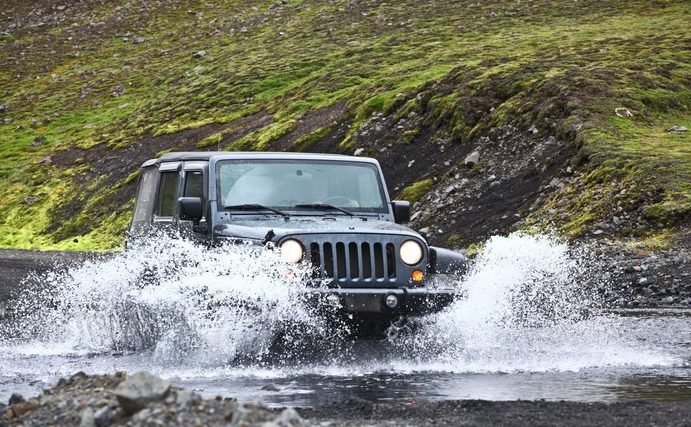If your 4×4 routinely tackles challenging conditions—from deep river crossings and muddy tracks to vast, dusty desert environments—the simple answer is a resounding yes; your vehicle must secure a cleaner, more elevated source of air. The standard air intake system is usually nestled low in the engine bay, a position that leaves it critically exposed. This low placement makes the engine highly susceptible to ingesting water during a deep ford, or drawing in excessive fine dust during quick, off-road transit. Recognising this critical vulnerability, fitting a 4WD snorkel becomes one of the most indispensable modifications for dedicated adventure drivers, offering fundamental and necessary protection against engine hydrolocking and premature wear.
The Real Threat: Engine Hydro-Lock
During any water crossing, the most catastrophic risk the engine faces is termed hydro-locking. This mechanical failure occurs when the engine draws water through the air intake system, allowing it to reach the cylinders. Fundamentally, water, unlike air and fuel, is incompressible. When the piston attempts its upward compression stroke, the resistance from the trapped water causes the engine to stall instantly.
This event frequently results in severe internal trauma, often bending the connecting rods, warping valves, or even cracking the engine block. The resulting damage is typically terminal and demands extremely costly repair procedures.
More Than Just Water: Better Air Quality and Dust Management
While most drivers initially consider upgrading the air induction system solely for engine protection during deep river fording, the practical benefits stretch significantly further—a major plus for those who undertake extended overland travel.
- Cleaner Air Intake: Think about driving on dusty trails (the Outback is a perfect example). The air nearest the ground is often heavily saturated with fine, abrasive particles kicked up by your own tyres.
- Performance Benefits (Air Density): In specific applications, a meticulously
installed, the high-flow air system has the capacity to draw in air that is
marginally cooler and denser than the heated air within the engine bay.
Where Quality Truly Counts
The effectiveness of any high-mount intake is not merely determined by the component itself, but rather by the absolute quality and precision of its installation.
Critical Steps for a Successful Installation
- Waterproofing the Airbox is Non-Negotiable: Factory airboxes frequently incorporate small drainage points or minor gaps. For the system to provide adequate water protection, the airbox unit must be meticulously and completely sealed using only the highest-grade automotive sealant.
- Ducting Requires Flawless Sealing: The crucial piping that connects the external intake to the airbox needs to be robust. Furthermore, it must be hermetically sealed at every single junction.
- Selecting the Optimal Head Type: Your choice of head orientation should align with your driving environment: forward-facing or rear-facing.
Making the Engine Upgrade Decision
If your 4×4 lifestyle involves any regular exposure to deep water, pervasive mud, or prolonged dusty conditions, this upgrade should no longer be viewed as a “nice-to-have” add-on. It immediately becomes an absolutely crucial engine safeguard.
Contact a certified 4WD parts supplier or an experienced off-road workshop today to discuss installation and ensure your engine breathes easily and safely on every single adventure.

